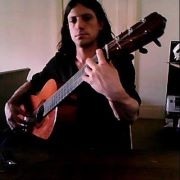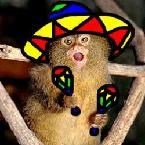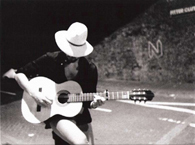Welcome to one of the most active flamenco sites on the Internet. Guests can read most posts but if you want to participate click here to register.
This site is dedicated to the memory of Paco de Lucía, Ron Mitchell, Guy Williams, Linda Elvira, Philip John Lee, Craig Eros, Ben Woods, David Serva and Tom Blackshear who went ahead of us.
We receive 12,200 visitors a month from 200 countries and 1.7 million page impressions a year. To advertise on this site please contact us.
|

|
|
dance choreography "things"
|
You are logged in as Guest
|
|
Users viewing this topic: none
|
|
Login  | |
|

   
John O.
Posts: 1723
Joined: Dec. 16 2005
From: Seeheim-Jugenheim, Germany

|
 RE: dance choreography "things&... (in reply to marduk) RE: dance choreography "things&... (in reply to marduk)
|
|
|
Oooh this is a long discussion with a lot of room for argument, ehh, different opinions.
The basic overview for anything in flamenco would be
-Guitar intro (falseta, if you're lucky)
-Dancer enters and singer sings the first tones
-Dancer starts footwork (entrada/salida)
-Ending with a break or llamada
(don't get too confused with cierre, remate, llamada etc., all these terms can often be used for the same thing, basically show that one person is done and the next person can start)
-First verse (letra)
-In the letra a break of 1-2 compás (contestacion, not a must)
-Footwork (zapateado, taconeo, basically footwork)
-Ending with a break or llamada
Repeat the above four 1-3 times, not a must
-Dancers main solo (Escobilla)
-Ending with a llamada (usually no break, can kill the momentum)
-Final climax, faster, final singing (macho)
This won't give you a 100% clear overview but should give you the basic elements to look for in your choreographies. Silencio and Castellana are special for alegria.
Don't get too stuck on thinking that there's some sort of secret language with which you can see everything coming and react. Once you've seen everything you can react to it, but it just takes years of doing it with different people. There is a basic structure and while an experienced flamenco will have no problems playing along to a traditional choreography, anything for the stage is rehearsed and not done intuitively.
Hope this gets the ball rolling.
_____________________________
Don't sweat the petty things and don't pet the sweaty things
|
|
|
|
REPORT THIS POST AS INAPPROPRIATE |
Date Jan. 10 2011 13:24:28
 |
|

   
John O.
Posts: 1723
Joined: Dec. 16 2005
From: Seeheim-Jugenheim, Germany

|
 RE: dance choreography "things&... (in reply to orsonw) RE: dance choreography "things&... (in reply to orsonw)
|
|
|
I don't know if that's modern, I'd just say it's okay as there's no "rule" about it. Come to think of it I've had a Solea por Buleria dance intro go 6 compás, 4 with some golpes while walking in and 2 the typical "llamada". Yeah, you can call it all llamada, but you can really see the theme followed by a climax, the climax being the llamada. It fit well into the opening falseta. There's rarely a definite rule of thumb with lots of stuff in flamenco, it would really limit creativity.
The important thing really in any case is that you have a clear ending to the opening leaving that energy in the air and the singer knows when to start.
For me there's a footwork theme inbetween letras and there's a llamada. IMO a dancer is usually at the climax after two compás llamada and usually can't take it higher, I'd really have to see it though. Something faster like bulerias okay, but a solea with a four compás llamada with footwork straight through would absolutely kill the moment, I'd imagine.
_____________________________
Don't sweat the petty things and don't pet the sweaty things
|
|
|
|
REPORT THIS POST AS INAPPROPRIATE |
Date Jan. 10 2011 21:56:47
 |
|

   
orsonw
Posts: 1941
Joined: Jul. 4 2009
From: London

|
 RE: dance choreography "things&... (in reply to John O.) RE: dance choreography "things&... (in reply to John O.)
|
|
|
quote:
I'd just say it's okay as there's no "rule" about it. Come to think of it I've had a Solea por Buleria dance intro go 6 compás, 4 with some golpes while walking in and 2 the typical "llamada". Yeah, you can call it all llamada, but you can really see the theme followed by a climax, the climax being the llamada.
In bulerias, alegrias, solea por bulerias I sometimes use 4 (even up to 6) compas llamada, with some variation within it and a climax, but all fast, heavy footwork. They are what you are calling typical two compas llamada joined together. With a strong dancer with killer compas it can sound great, they just keep building and building.
I enjoy working on creating choreography and trying different things. Some artists I work with just like to get on stage and improvise so more obvious communication is needed, others like tight choreography and then more experimental things can work because it's well rehearsed.
|
|
|
|
REPORT THIS POST AS INAPPROPRIATE |
Date Jan. 11 2011 9:26:01
 |
|

   
John O.
Posts: 1723
Joined: Dec. 16 2005
From: Seeheim-Jugenheim, Germany

|
 RE: dance choreography "things&... (in reply to orsonw) RE: dance choreography "things&... (in reply to orsonw)
|
|
|
quote:
In bulerias, alegrias, solea por bulerias I somtimes use 4 (even up to 6) compas llamada, with some variation within it and a climax, but all fast, heavy footwork. With a strong dancer with killer compas it can sound great, they just keep building and building.
This I can imagine, it was just a difference in definition. There's a 6 compás llamada with a 2 compás climax where I'd say there's footwork and the climax containing a movement in the compás signaling an end (step forward, hand up) is what I'd call the "llamada" because to me that's "the call". I think your definition as Ricardo said before is the more correct one, it's all the llamada and you should be paying attention throughout the whole thing.
_____________________________
Don't sweat the petty things and don't pet the sweaty things
|
|
|
|
REPORT THIS POST AS INAPPROPRIATE |
Date Jan. 11 2011 9:54:56
 |
|
 New Messages New Messages |
 No New Messages No New Messages |
 Hot Topic w/ New Messages Hot Topic w/ New Messages |
 Hot Topic w/o New Messages Hot Topic w/o New Messages |
 Locked w/ New Messages Locked w/ New Messages |
 Locked w/o New Messages Locked w/o New Messages |
|
 Post New Thread
Post New Thread
 Reply to Message
Reply to Message
 Post New Poll
Post New Poll
 Submit Vote
Submit Vote
 Delete My Own Post
Delete My Own Post
 Delete My Own Thread
Delete My Own Thread
 Rate Posts
Rate Posts
|
|
|
Forum Software powered by ASP Playground Advanced Edition 2.0.5
Copyright © 2000 - 2003 ASPPlayground.NET |
0.09375 secs.
|


 Printable Version
Printable Version











 New Messages
New Messages No New Messages
No New Messages Hot Topic w/ New Messages
Hot Topic w/ New Messages Hot Topic w/o New Messages
Hot Topic w/o New Messages Locked w/ New Messages
Locked w/ New Messages Locked w/o New Messages
Locked w/o New Messages Post New Thread
Post New Thread